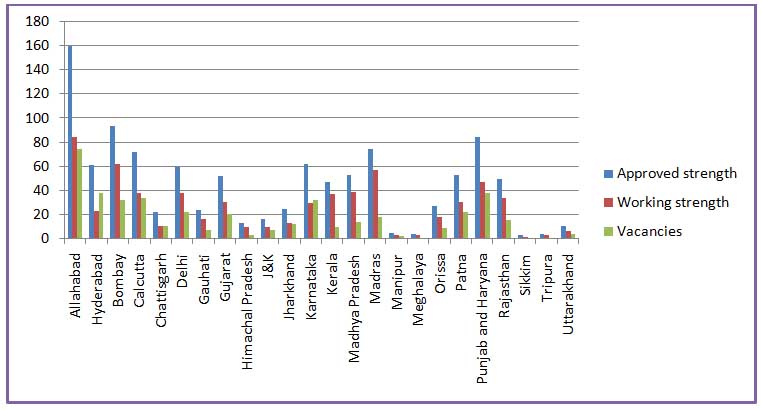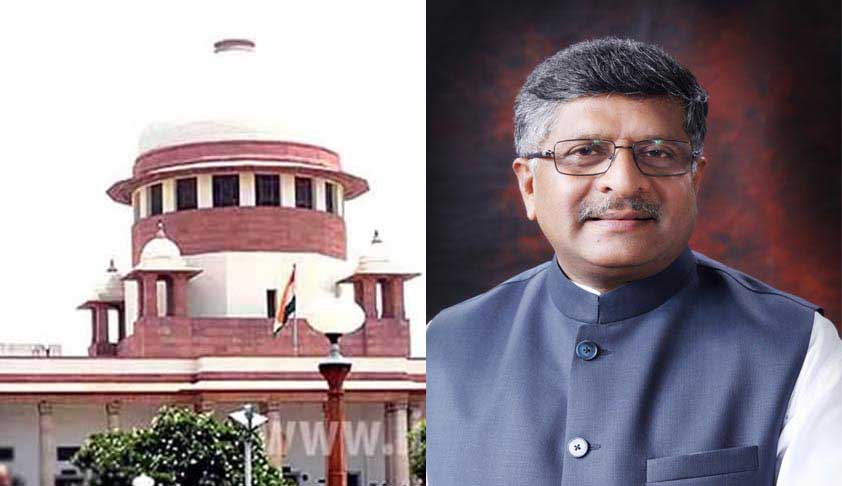- Home
- /
- Top Stories
- /
- Centre Returns 13 Names For...
Centre Returns 13 Names For Appointment To Allahabad HC, Despite Iteration By Collegium
Apoorva Mandhani
3 Jan 2017 5:22 PM IST
The Centre on Monday reportedly returned the names of 13 Judges recommended by the Supreme Court collegium which had already iterated appointment of these Judges for Allahabad High Court.The Collegium was asked to reconsider the recommendations, with Attorney-General Mukul Rohatgi telling a bench led by outgoing Chief Justice of India T.S. Thakur that they had found “certain...
The Centre on Monday reportedly returned the names of 13 Judges recommended by the Supreme Court collegium which had already iterated appointment of these Judges for Allahabad High Court.
The Collegium was asked to reconsider the recommendations, with Attorney-General Mukul Rohatgi telling a bench led by outgoing Chief Justice of India T.S. Thakur that they had found “certain inconsistencies” in the recommendations for 13 new Judges for Allahabad High Court, out of the 37 names reiterated by the collegium for various High Courts.
During the hearing, Senior Counsel Ram Jethmalani and Gujarat Bar Association President Yatin Ozha alleged deliberate delay on the part of the Government in transfer of a Judge from Gujarat High Court. The transfer had been recommended by the collegium in April, 2016.
It was brought to the notice of the Court that while the transfer in question had been kept pending till date, several recommendations made prior to April 2016 had been cleared by the Government. Mr. Jethmalani then contended that failure to effectuate the transfer despite reiteration by the collegium would lead to “reasonable apprehensions” in the minds of the people even if they are “unfounded apprehensions” as to “why is the government keeping a matter pending.”
Mr. Ozha also made reference to the case of Uttarakhand High Court Chief Justice K.M. Joseph, whose transfer to the High Court of Hyderabad has not been confirmed till date.
Directing the AG to submit a report recording reasons for delay in the transfer within three weeks, the Bench was quoted as saying, “There are processes for appointing judges, there are processes for transferring high court judges which have been pending for seven months. You need to tell us the reason for the delay. You need to have some plausible explanation for the delay. Why are you sitting over the files? If the recommendations are not agreeable you can send back the files to us. The files can’t be kept languishing. There should be some reasonable explanation.”
The Chief Justice also agreed with Mr. Jethmalani’s contention that public perception would be affected if a Judge is transferred but continues to hear a case.
Parliamentary Standing Committee’s invitation of memoranda on delay in filling judicial vacancies
Earlier in November, 2016, the Parliamentary Standing Committee on Personnel, Public Grievances, Law and Justice had solicited memoranda on the delay in filling up of vacancies in the Supreme Court and the High Courts.
“Around 42 percent of sanctioned posts in higher judiciary are lying vacant for quite some time now. Such a large number of vacancies is alarming in nature and has direct bearing upon the access to justice for common people. The Committee intends to address systemic short-comings in judicial appointments and suggest improvements to streamline the existing procedure and process for appointment in higher judiciary,” the advertisement stated.
The Judiciary-Government standoff
A three Judge Bench of the Supreme Court, headed by Chief Justice of India T.S. Thakur, had earlier accused the Government of “trying to starve out the cause of justice by not appointing Judges.”
Expressing anguish over the delay in appointments, despite recommendations made by the collegium in this regard, the Bench had asked, “Courts rooms are locked down. Do you want to lock down the judiciary?”
The Judiciary was especially exasperated over the delay in appointments to the High Court of Allahabad, which is currently functioning at less than 50 per cent of its approved strength. This was despite the fact that the collegium had cleared eight such appointments in January, and 27 in August. Karnataka High Court has been experiencing a similar situation, with several Court rooms locked due to the vacancies.
The Court’s observations were issued on two Public Interest Litigations seeking filling up of judicial vacancies in various Courts throughout the country. The Court made scathing observations, and almost summoned the Secretaries in the Prime Minister’s Office and Ministry of Justice during the hearing.
Attorney General Mukul Rohatgi however sought one more chance to “come up with something positive” by November 11, the next date of hearing, defusing the volatile situation and preventing the summoning of the top officials. You may read the LiveLaw article here.
Soon after the observations by the Supreme Court, Centre had insisted that even it was keen on expediting appointments but was hamstrung because of the SC's own directive to appoint Judges on the basis of the new Memorandum of Procedure (MoP).
“If the government had intended to stall, it would not have appointed 86 new judges to high courts, four to the Supreme Court, 14 chief justices of HCs and accepted the collegium's recommendations for transfer of four CJs and 33 judges from HCs since December last year. It also made permanent 121 ad hoc judges in HCs,” sources in the Law Ministry were quoted as saying.
“The government is keen to implement the five-judge bench's mandate to reinforce the MoP with transparency and objectivity. How long can appointments go on under a system held to be flawed by the SC's five-judge bench?” the source asked, referring to the Constitution Bench judgment of the Supreme Court, wherein it had directed the Government to draft a new Memorandum of Procedure [MoP] for appointment of High Court and Supreme Court Judges.
Not the first time
This was not the first time that the Chief Justice had lashed out at the Government over the issue of delay in appointments. Earlier in August, he had demanded a reason for the “mistrust”, saying, “The collegium has cleared 75 names of high court judges (for transfer/ appointment) but they have not been approved. I don’t know why, where these files are stuck.”
“I will take it up at the highest level and will come back to the court,” Mr. Rohatgi had then told the Bench and pleaded that no notice be issued for the time being in the PIL.
Not satisfied by Mr. Rohatgi’s repeated assurances, CJI Thakur had said, “Don’t force us to ask where the files are… don’t force us to judicially intervene… don’t try to bring this institution to a grinding halt… That’s not the right thing to do.”
It is to be noted that in April this year, during the National Conference of State Chief Justices and Chief Ministers, an emotional CJI Thakur had launched an unprecedented attack on the present and earlier Governments for often blaming the Judiciary for mounting backlog of cases, which touched an alarming 3.14 crore, but at the same time doing nothing to improve the number of Judges and increasing the number of Courts despite repeated pleas from the Judiciary.
Alarming judicial vacancies in HCs
Vacancies in the High Courts of the country currently account for 40% of its approved strength. The following graph shows the approved strength, the working strength and the vacancies in the High Courts, as on January 1, 2016:

Out of the 24 High Courts, 13 are working on less than 65% of their approved strength, considerably waning the working capacity of the Judiciary.
Allahabad High Court has the largest number of vacancies, standing at 75. It is hence currently working at less than 55% of its approved strength, along with the High Courts of Hyderabad, Chhattisgarh. Jharkhand, Karnataka and Calcutta.
High Courts of Meghalaya, Tripura and Sikkim are functioning with 1 vacancy each. Further, even though Punjab and Haryana High Court has the second largest approved strength, it is working at 55% of that strength.
With the High Courts functioning at 60% of their approved strength, the dream for reducing the pendency of cases is unlikely to be realised in the near future.
This article has been made possible because of financial support from Independent and Public-Spirited Media Foundation.


